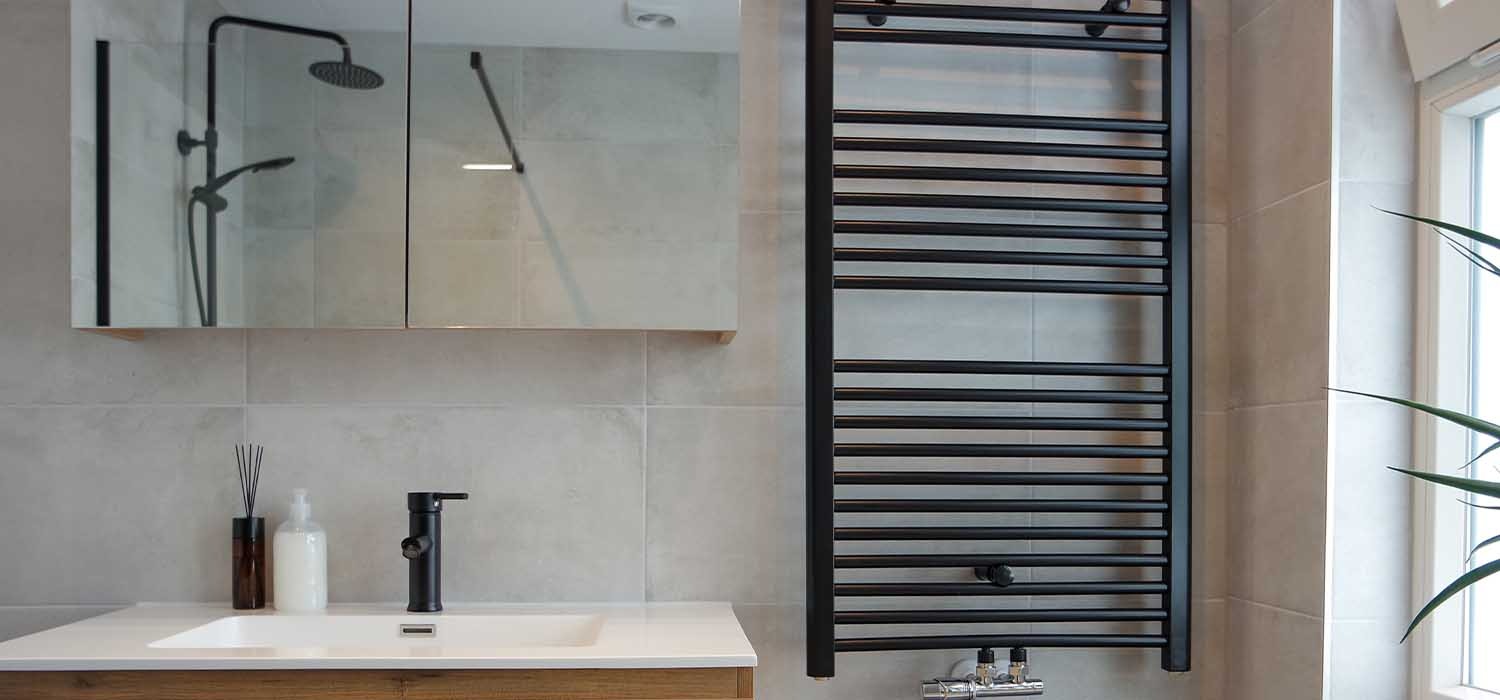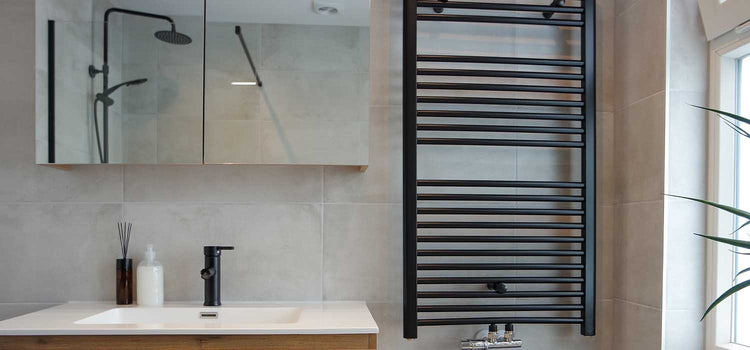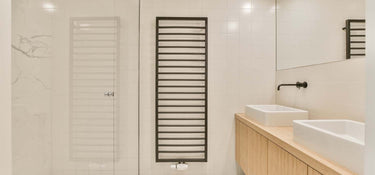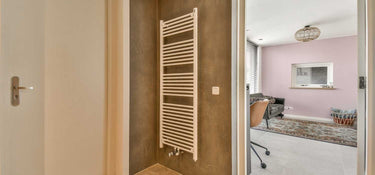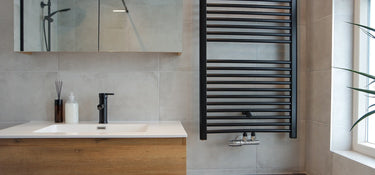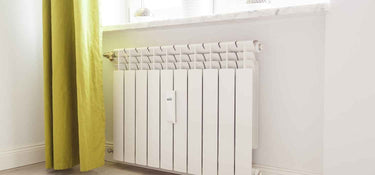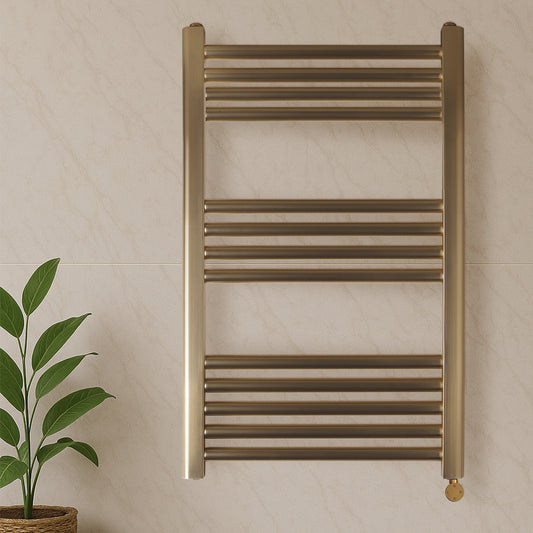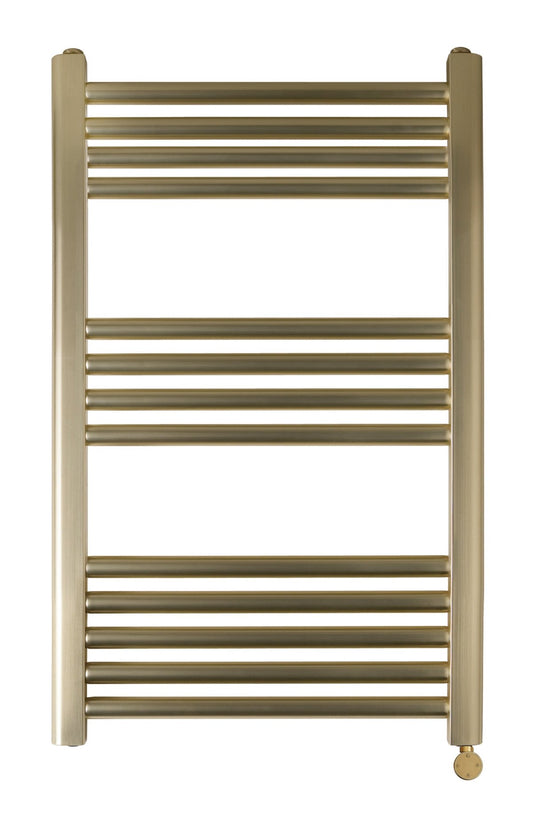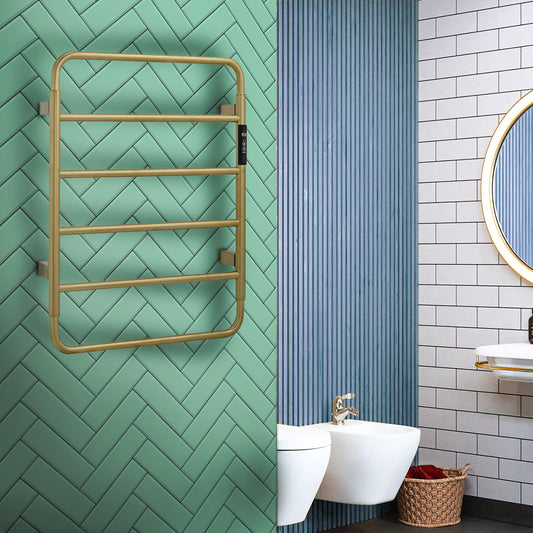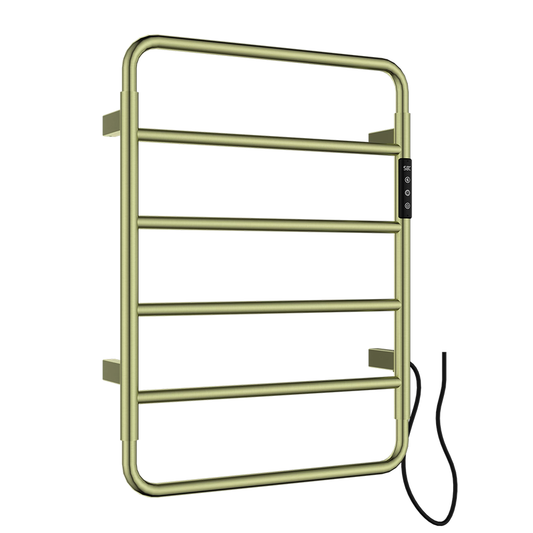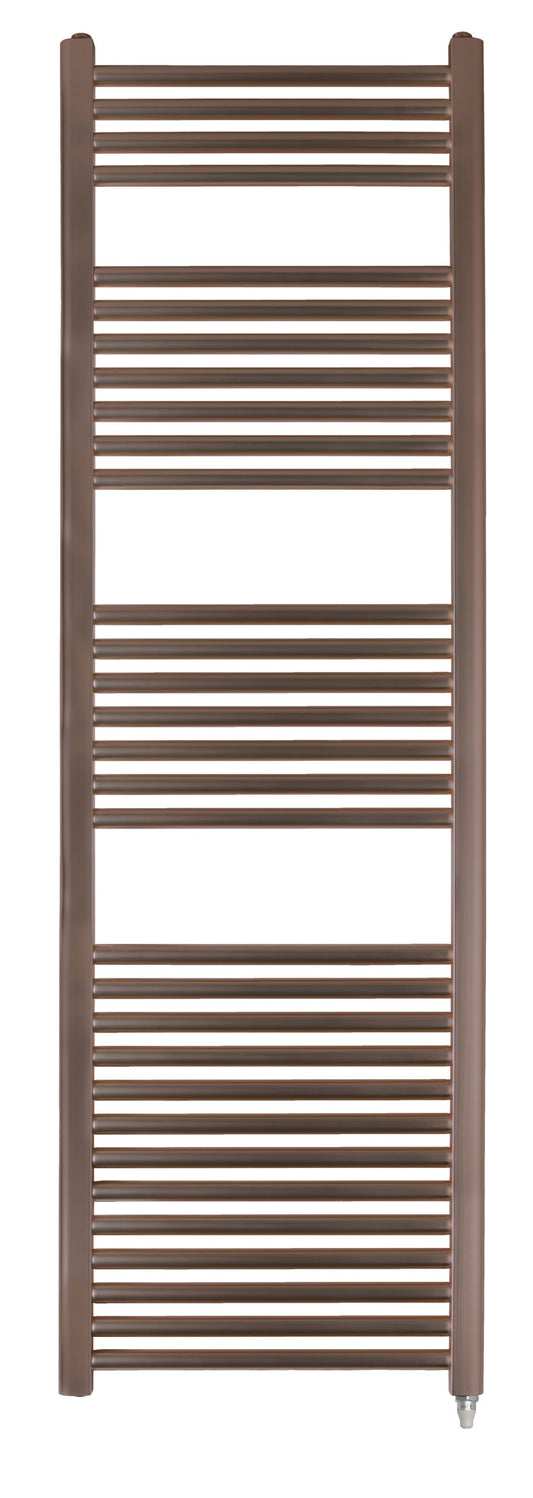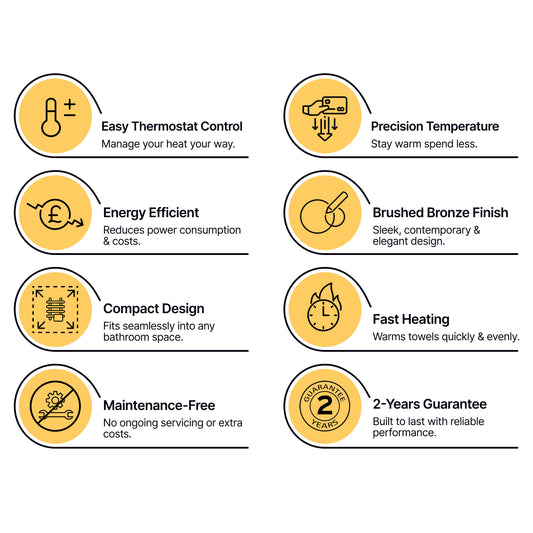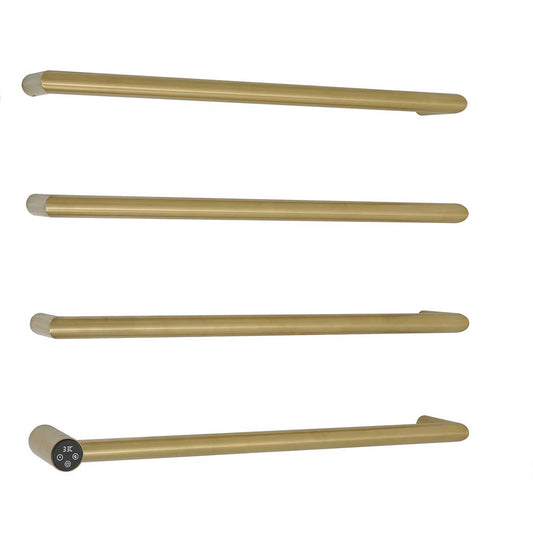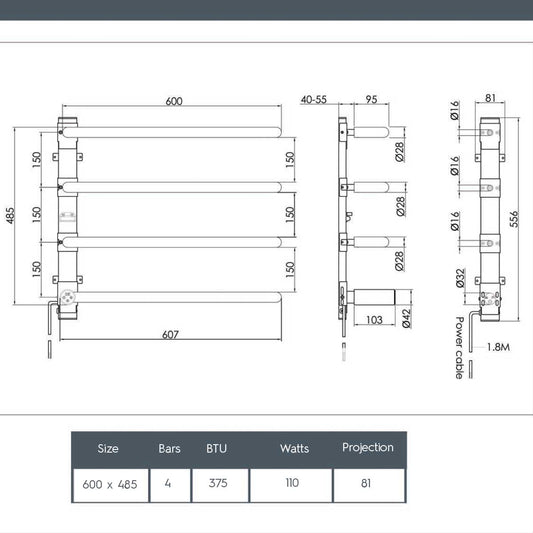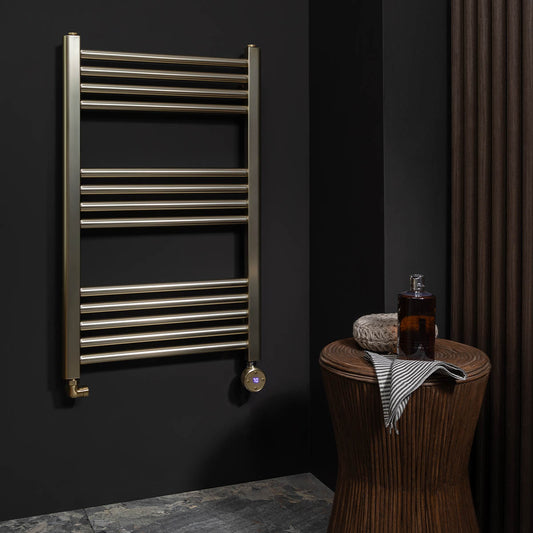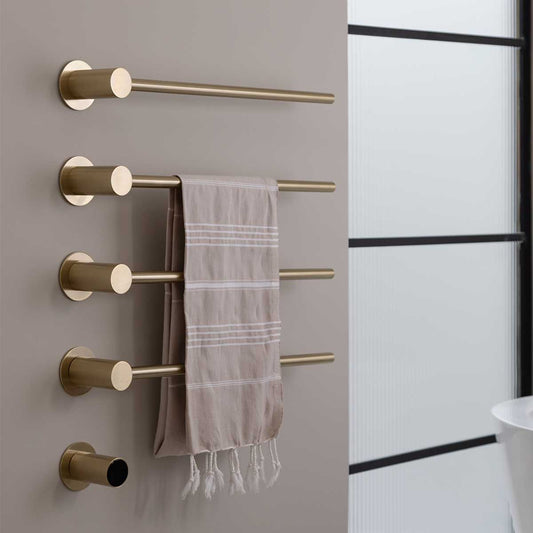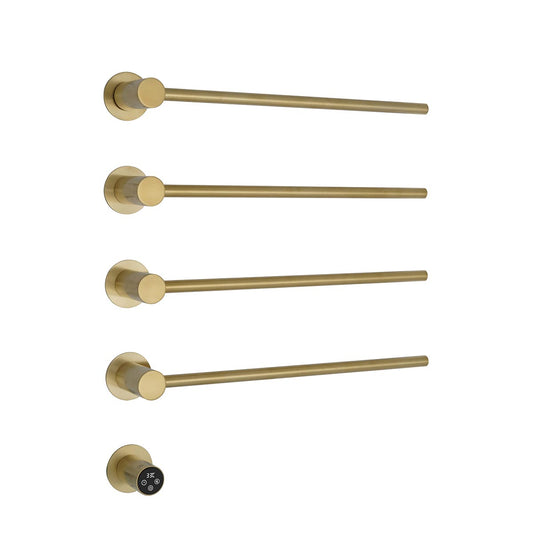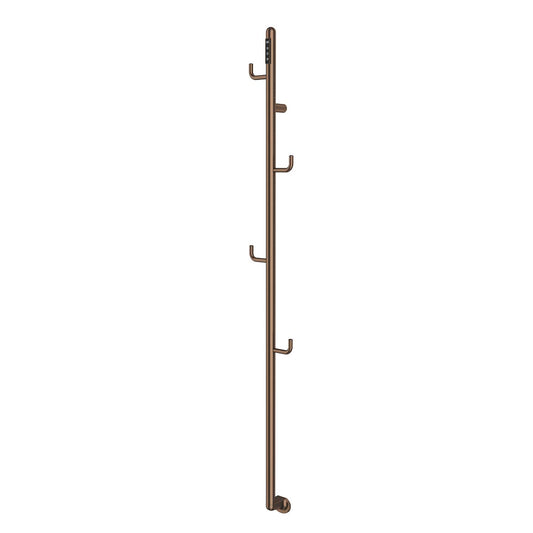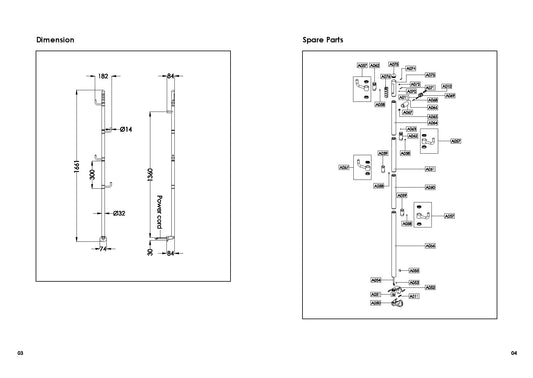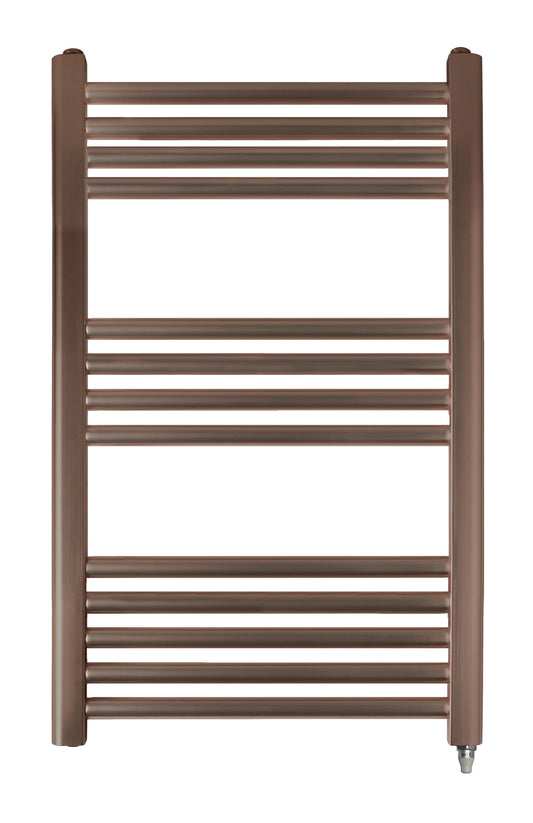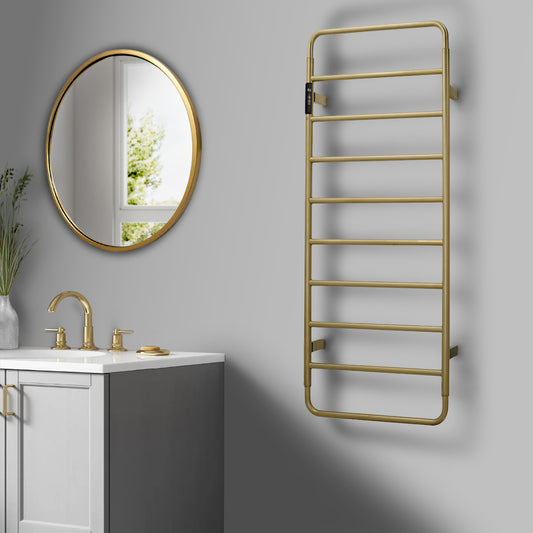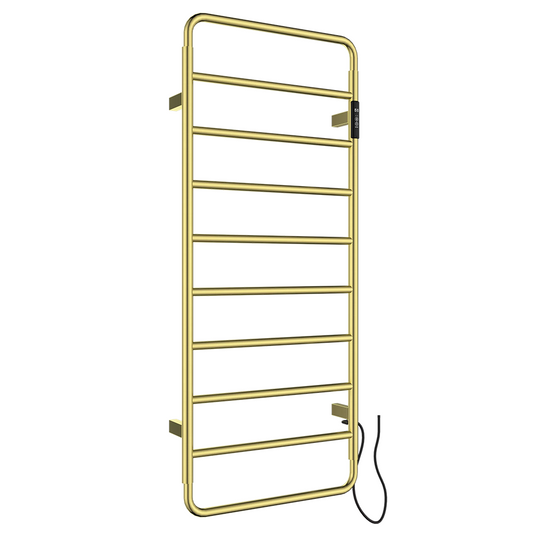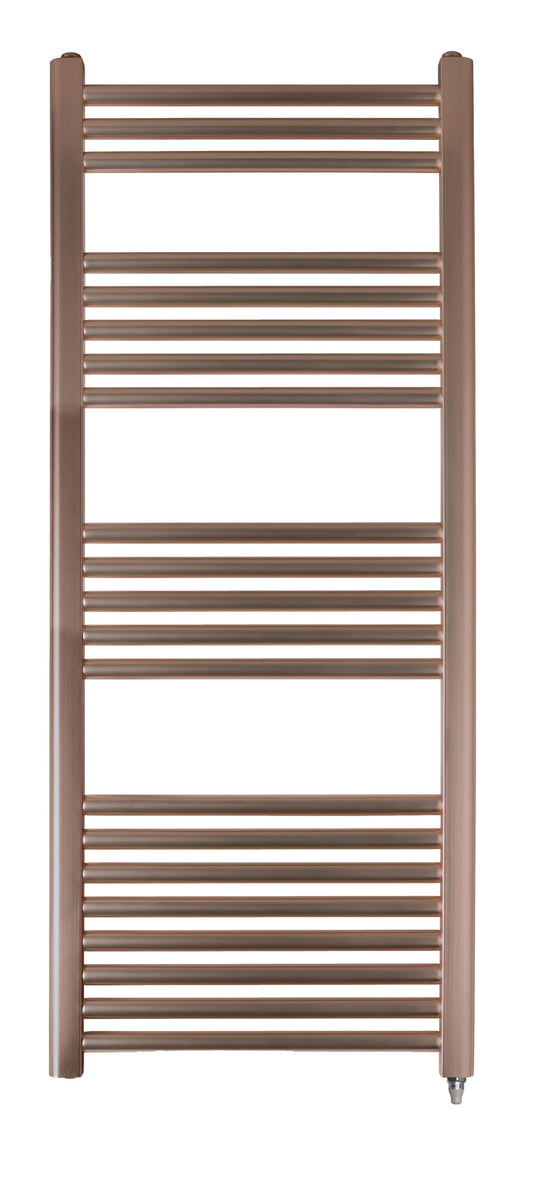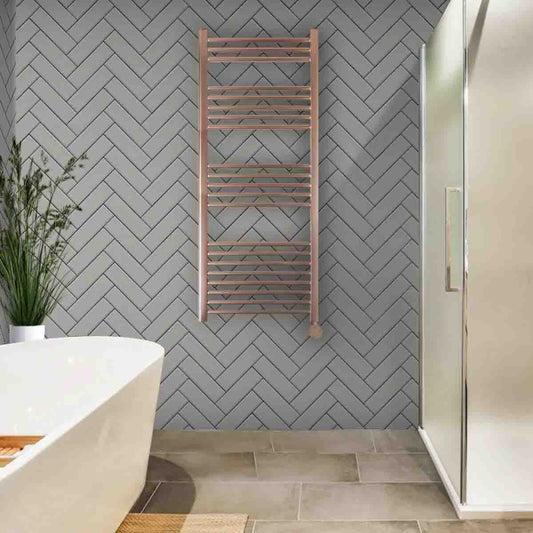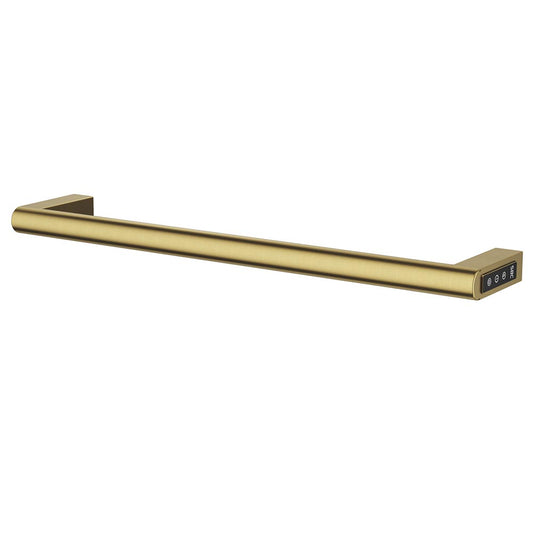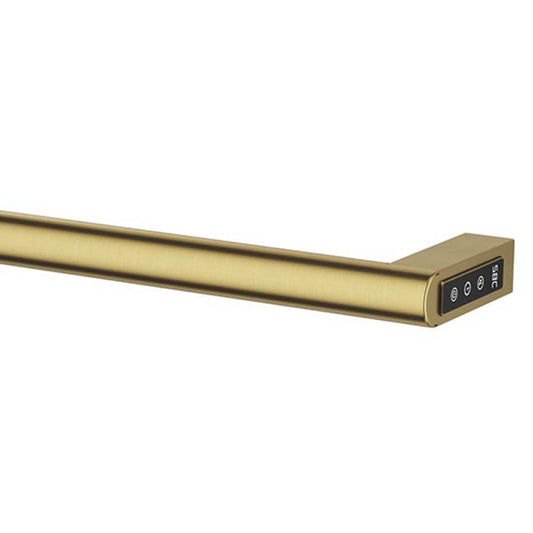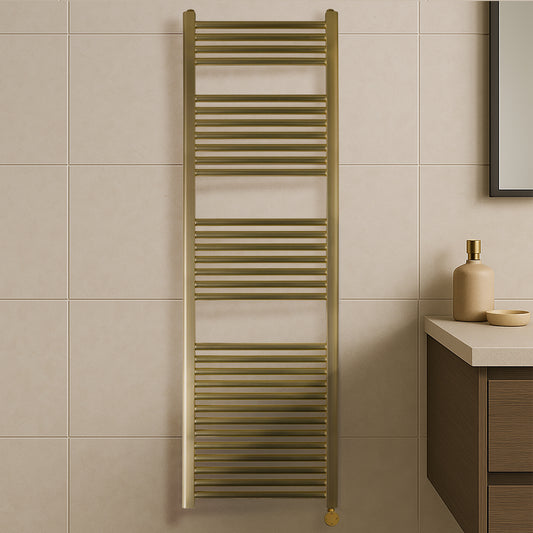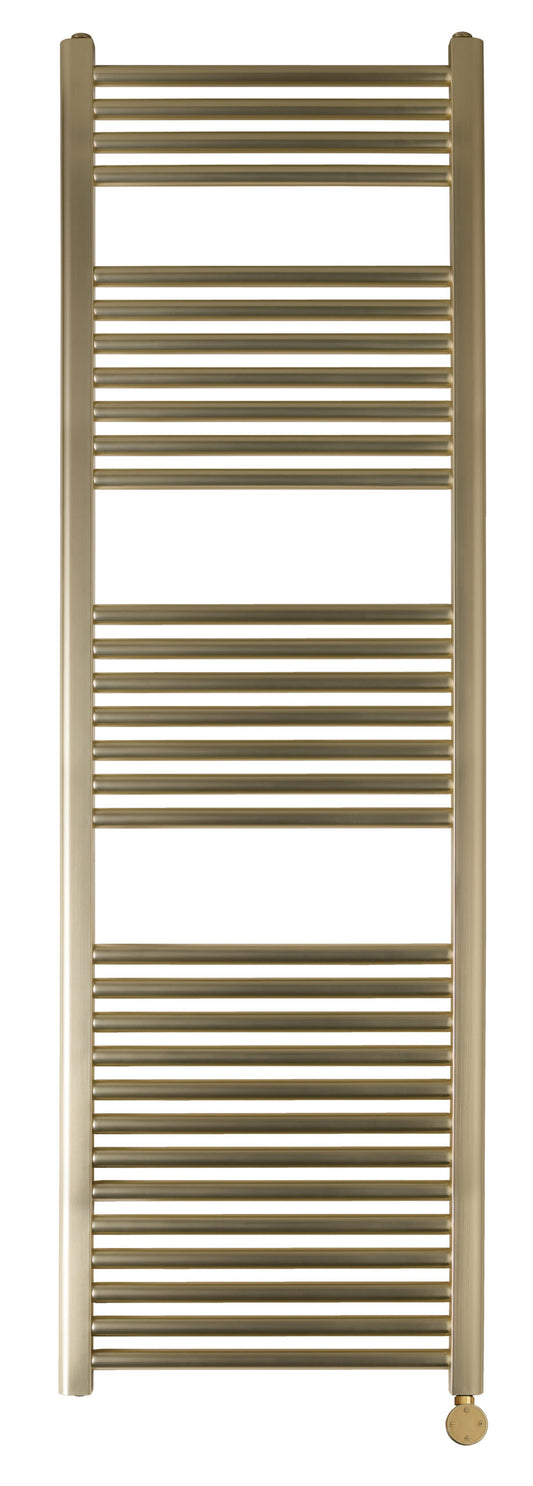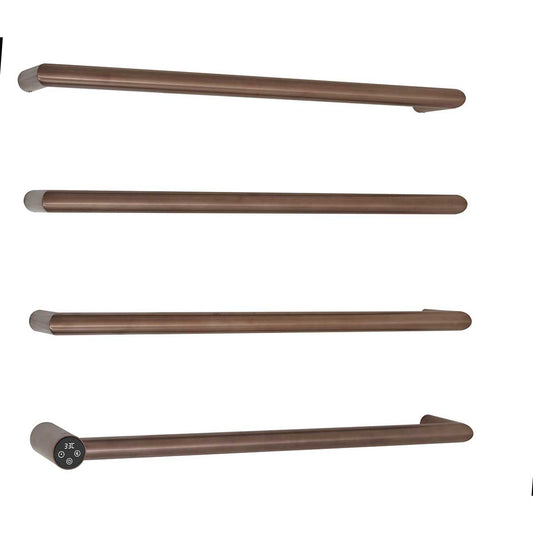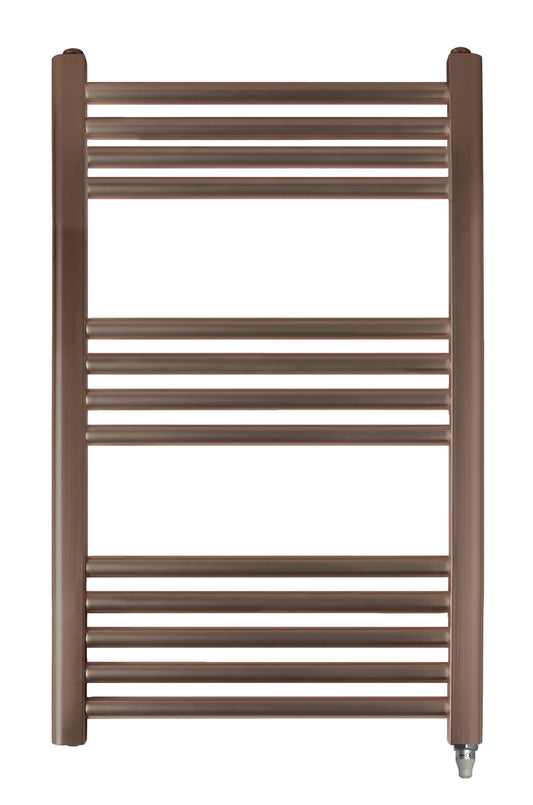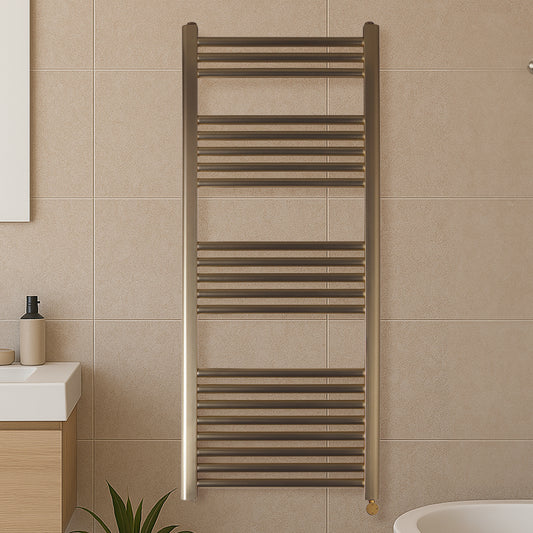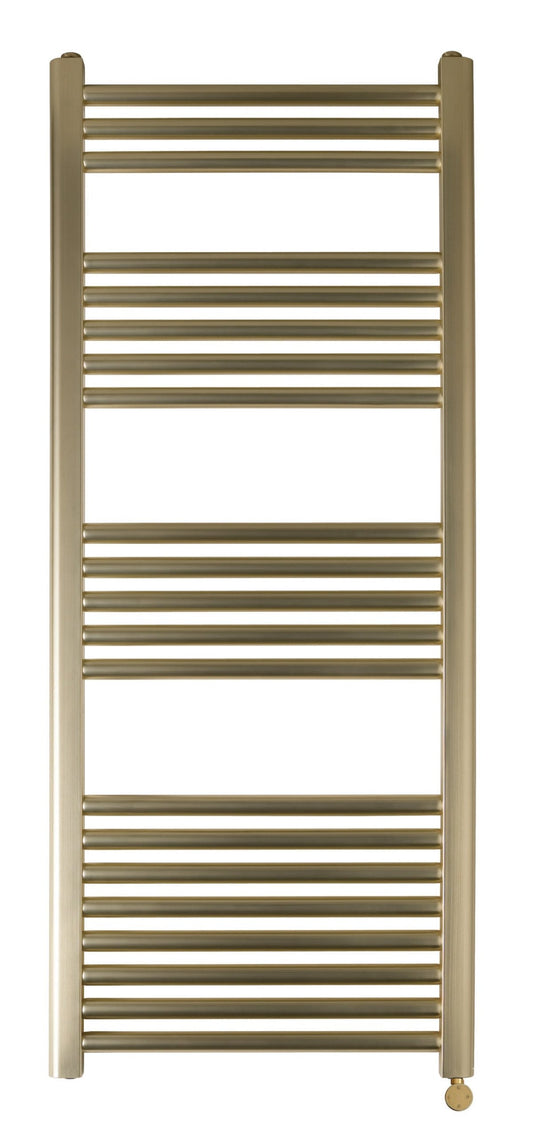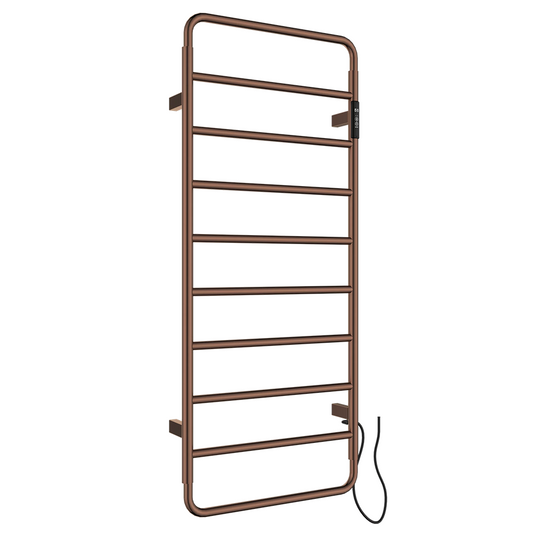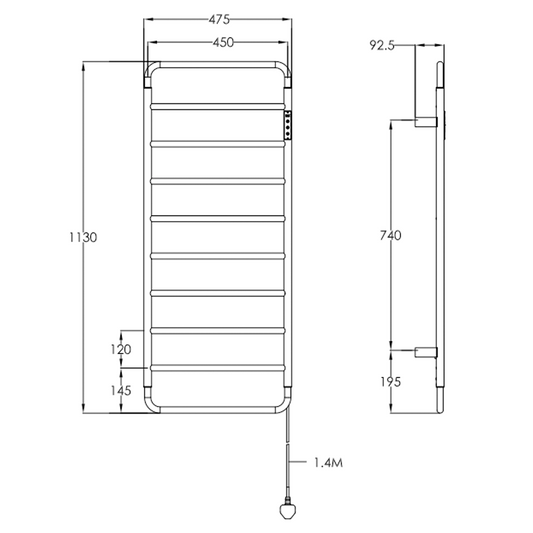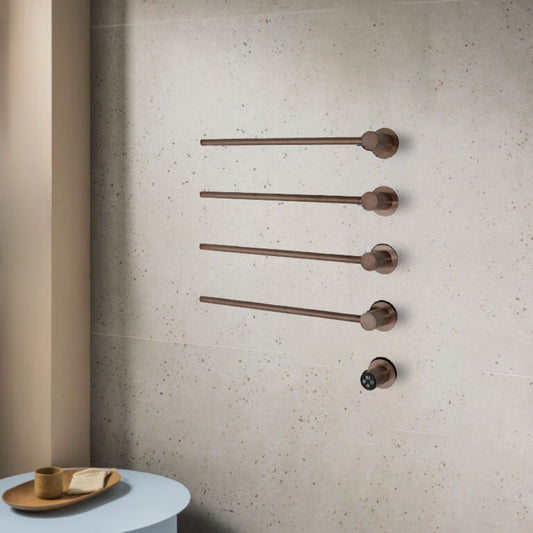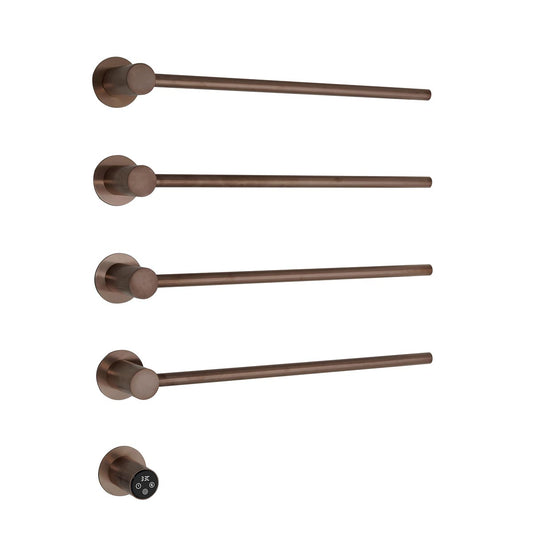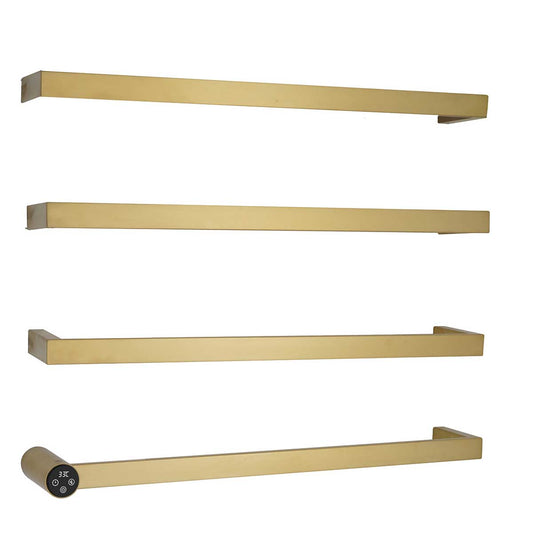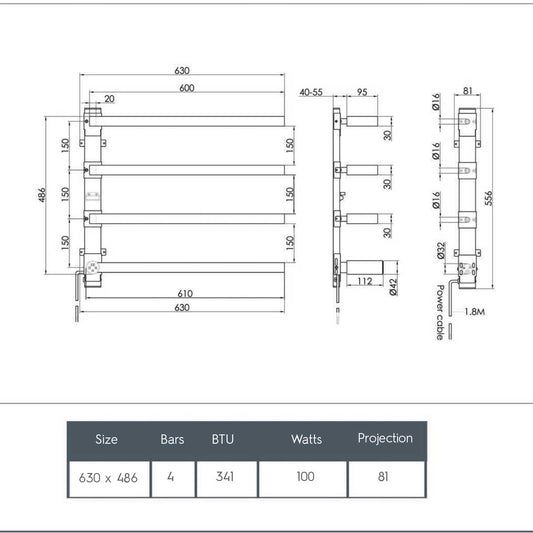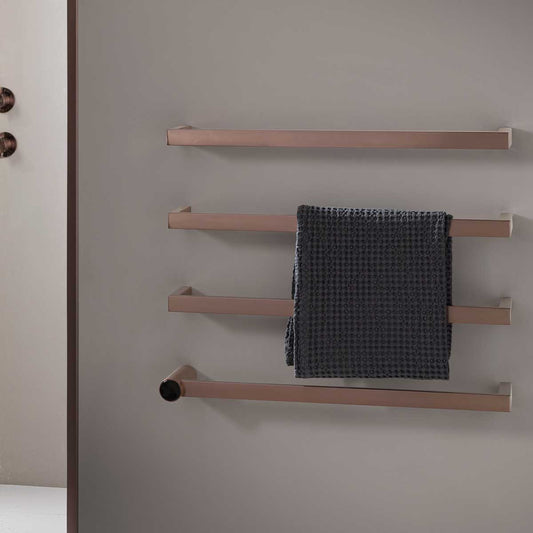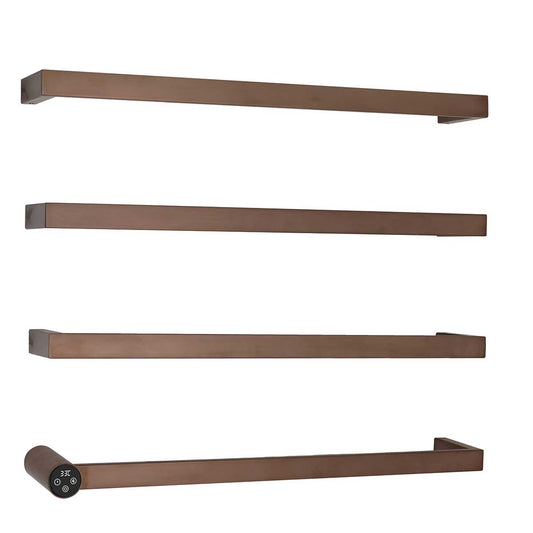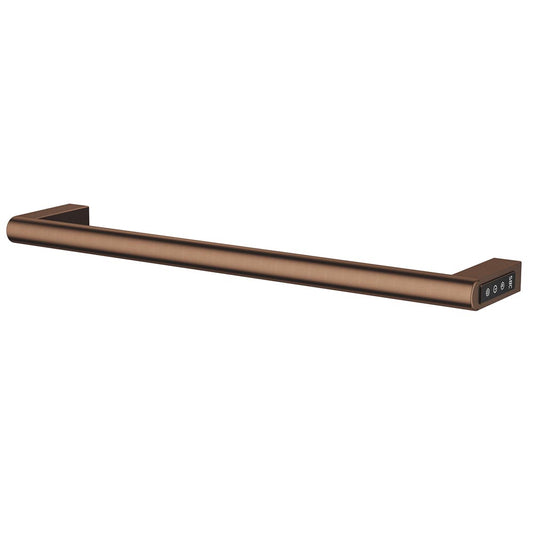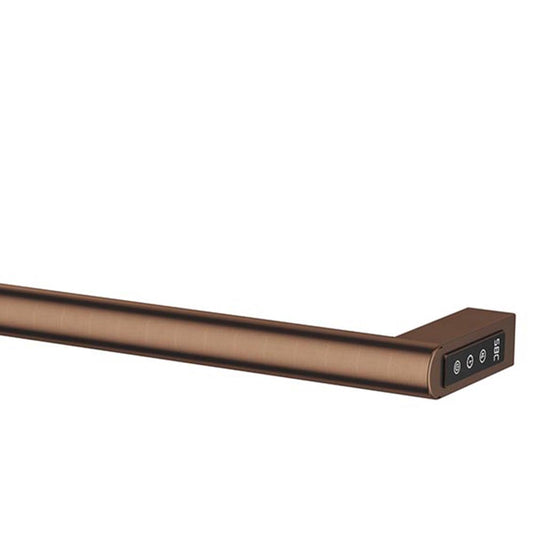Electric Towel Radiator: How to Find the Perfect Fit for Your Bathroom
Table Of Contents:
-
Introduction
→ -
Electric Towel Radiators Collection
→ -
Choosing the Right Electric Towel Radiator for Your Bathroom
→ -
Size of Electric Towel Radiator
→ -
Regulations to Use Electric Towel Radiator
→ -
Lifespan of an Electric Towel Radiator
→ -
Can You Paint Electric Towel Radiators?
→ -
Conclusion
→ -
FAQs
→
Introduction
Electric towel radiators offer an ideal solution for keeping your bathroom warm and your towels toasty, especially during colder months. These heating units combine functionality with style, enhancing the ambiance of your bathroom while also providing practical warmth. However, with so many options available, finding the perfect electric towel radiator for your bathroom can be a challenging task. This guide will help you understand how to choose the right radiator based on your needs, space, and design preferences, ensuring you make a smart and informed decision.
Choosing the Right Electric Towel Radiator for Your Bathroom
When it comes to heating your bathroom and keeping your towels warm, an electric towel radiator is an excellent choice. These radiators combine the practical benefits of efficient heating with the added luxury of warm towels. However, with a variety of designs, sizes, and features, choosing the right electric towel radiator for your bathroom can be overwhelming. This guide will help you navigate the key considerations to ensure you find the perfect match for your space, needs, and style.

1. Assess the Size and Layout of Your Bathroom
The first step in choosing the right electric towel radiator is considering the size of your bathroom and its layout. The radiator should not only provide sufficient heat but also fit well within the space.
-
Small Bathrooms: For smaller bathrooms, go for compact or slimline towel radiators that can be wall-mounted, saving precious floor space. Ladder-style or vertical models are great choices for tight spaces.
-
Large Bathrooms: Larger bathrooms require a more powerful radiator. Look for radiators with more bars or higher wattage. These can cover more area and distribute heat evenly across the room.
-
Wall-mounted vs. Freestanding: If you are limited on space, wall-mounted models are ideal for saving space, while freestanding radiators can add a statement piece to the room. Make sure to choose based on the available space in your bathroom.
2. Consider the Design and Style
The design of your electric towel radiator should complement your bathroom’s decor. You’ll want a unit that enhances the look of your bathroom, whether you prefer a sleek, modern style or something more traditional.
-
Modern Designs: Opt for clean lines, chrome, or stainless steel finishes for a minimalist look. Ladder-style towel radiators are ideal for contemporary spaces.
-
Traditional Bathrooms: For a more classic, vintage feel, choose radiators with ornate details and finishes like antique brass, matte black, or brushed gold.
-
Finish Options: Consider the finish of the radiator. Chrome and stainless steel are popular for their sleek, polished look, while matte black and gold finishes are perfect for adding warmth and sophistication to your bathroom.
3. Check the Heating Capacity and Wattage
To ensure that your electric towel radiator can effectively heat your bathroom, it’s important to check its heating capacity. This is determined by its wattage, which directly correlates to the size of the space it can heat.
-
General Rule of Thumb: Typically, you will need 100 watts of heating power per square meter of your bathroom. So for a 5m² bathroom, a radiator with around 500 watts of power is a good fit.
-
Thermostats: Many modern electric towel radiators come with built-in thermostats, allowing you to adjust the temperature to your preference. This can help reduce energy consumption by ensuring the radiator doesn't run continuously.
4. Energy Efficiency and Cost
Energy efficiency is a major consideration when choosing an electric towel radiator. A more efficient model will not only lower your energy bills but also be more environmentally friendly.
-
Programmable Timers: Some electric towel radiators come with timers, so you can set them to turn on and off at specific times. This feature ensures you aren’t wasting energy heating the bathroom when it’s not in use.
-
Low Energy Models: Opt for radiators designed for low power consumption. While they may have a higher upfront cost, they will save you money on energy bills in the long run.
5. Consider the Material and Build Quality
The material of your radiator affects both its performance and lifespan. Common materials include stainless steel, mild steel, and aluminum.
-
Stainless Steel: Known for its durability, resistance to corrosion, and sleek appearance, stainless steel is a popular choice for electric towel radiators.
-
Mild Steel: Although more affordable, mild steel requires more maintenance to prevent rust. It’s often coated with protective finishes for enhanced durability.
-
Aluminum: Aluminum towel radiators are lightweight, offer excellent heat conductivity, and are energy-efficient. They tend to be pricier but can last longer with minimal maintenance.
6. Ease of Installation and Maintenance
Installing your electric towel radiator should be straightforward, but always check the manufacturer’s guidelines to ensure proper installation.
-
DIY vs. Professional Installation: Some electric towel radiators can be installed by the homeowner, especially if they come with plug-in capabilities. However, if your radiator requires hard-wiring, it’s best to hire a qualified electrician to handle the installation.
-
Maintenance: Electric towel radiators require minimal maintenance. Regular cleaning with a microfiber cloth will keep them looking new, and checking for any leaks (in dual-fuel models) or signs of damage will help maintain optimal performance.
7. Budget and Warranty
Electric towel radiators come in a range of price points, so it’s important to find one that fits within your budget while still offering good quality.
-
Budget-Friendly Options: If you’re on a tight budget, you can find basic models that still provide excellent functionality. However, higher-end models may offer more features such as better energy efficiency, higher quality materials, and longer lifespans.
-
Warranty: Look for a radiator that comes with a warranty, as this can protect you against potential defects or malfunction. A longer warranty generally indicates better quality and peace of mind.
Choosing the right electric towel radiator involves more than just picking one that looks good. By carefully considering your bathroom’s size, heating requirements, design preferences, and budget, you can find the perfect radiator that offers both style and functionality. Always remember to take into account energy efficiency, the radiator's material, and ease of installation and maintenance for long-term satisfaction.

Size of Electric Towel Radiator: How to Choose the Right One for Your Bathroom
When selecting an electric towel radiator, size plays a critical role in ensuring that your bathroom stays comfortably warm and your towels are dried efficiently. The correct size will depend on several factors such as the dimensions of your bathroom, the radiator's heating capacity, and how much space you have available for installation. Here’s a breakdown of how to choose the right size for your electric towel radiator:
1. Calculate the Heating Requirements
To determine the appropriate size, it’s important to know the wattage needed to heat your bathroom effectively. A general rule of thumb is to allow 100 watts of power per square meter of bathroom space. For example:
-
Small Bathroom (up to 5m²): A radiator with a wattage of around 500 watts should be sufficient.
-
Medium Bathroom (5-10m²): For a bathroom of this size, you’ll need a radiator with 1000 watts of power.
-
Large Bathroom (10m² or more): Larger bathrooms may require radiators with 1500 watts or more, depending on the layout and insulation.
This wattage range ensures that your bathroom stays warm enough while drying towels effectively.
2. Consider the Bar Quantity
Electric towel radiators are designed with a varying number of bars, which indicate the surface area available for drying towels and radiating heat. More bars typically mean more heat distribution.
-
Small Bathrooms: A radiator with fewer bars (around 6-10) should suffice.
-
Medium Bathrooms: Choose a radiator with 10-15 bars for better heat distribution and efficient towel drying.
-
Large Bathrooms: For a larger space, opt for radiators with more than 15 bars for effective heat coverage.
A higher number of bars provides more area to dry towels and increases heat efficiency.
3. Check for Adequate Clearance
It’s important to leave adequate clearance around the electric towel radiator, especially if it’s wall-mounted. Ensure that the radiator is installed with enough space from nearby objects such as sinks, bathtubs, or cabinets. This will not only improve heating efficiency but also ensure safe and easy use.
Example for Calculating the Size of an Electric Towel Radiator
When selecting the right size for your electric towel radiator, you need to calculate the required heat output to ensure that your bathroom will be heated efficiently. The heat output is usually measured in British Thermal Units (BTUs) or Watts. Here’s a simple example to help you understand how to calculate the required size:
Step 1: Measure Your Bathroom Dimensions
First, measure the length, width, and height of your bathroom to calculate its total volume. Let’s say your bathroom is:
-
Length: 3 meters
-
Width: 2 meters
-
Height: 2.5 meters
Volume of the bathroom = Length x Width x Height
= 3 meters x 2 meters x 2.5 meters
= 15 cubic meters
Step 2: Estimate the Required Heat Output (BTUs)
A general rule of thumb is that you need 100 watts per square meter for a standard bathroom with average insulation. For larger bathrooms or poorly insulated rooms, you may need 120 to 150 watts per square meter.
Since you have the size of the bathroom, you can calculate the required wattage for your bathroom's floor space:
Floor area = Length x Width
= 3 meters x 2 meters
= 6 square meters
Required wattage = Floor area x watts per square meter
= 6 square meters x 100 watts
= 600 watts for a standard bathroom.
If your bathroom has poor insulation, you may need to increase this to 750 watts (100 watts per square meter x 125% to account for poor insulation).
Step 3: Convert Watts to BTUs
If the radiator is rated in BTUs, you can convert the wattage to BTUs. The conversion factor is:
1 watt = 3.41 BTUs.
So for 600 watts:
600 watts x 3.41 = 2046 BTUs.
Therefore, for a bathroom of this size, you would need a radiator with an output of 600 watts or 2046 BTUs to heat the space adequately.
Step 4: Consider Additional Factors
-
Insulation: If your bathroom is poorly insulated, or if it has high ceilings, you may need to increase the wattage or BTUs slightly.
-
Windows and Doors: If your bathroom has large windows or poor sealing, you may need a slightly higher output.
-
Radiator Design: The design and material of the radiator also play a role. Some models may deliver heat more efficiently than others.
For a typical bathroom of 6 square meters with average insulation, a radiator with an output of 600 watts or around 2046 BTUs should be sufficient. Always take into account the room's insulation and specific design features to choose the right size radiator. It’s also a good idea to consult a professional if you're unsure or need more precise calculations.
Regulations to Use Electric Towel Radiator
Installing an electric towel radiator involves more than just choosing the right model—it’s essential to follow specific regulations and safety guidelines to ensure both safe and efficient operation, especially when installing in a bathroom where moisture and water hazards are a concern. Below are key factors to consider to guarantee your electric towel radiator meets the necessary standards:
1. Electrical Standards
Electric towel radiators are classified as electrical appliances, which means they must meet strict safety standards outlined by local electrical codes. In many countries, such as the UK, these regulations are governed by the IET Wiring Regulations (BS 7671) or similar local codes. These standards are in place to protect both the user and the electrical system from potential hazards.
Key Points:
-
Proper Wiring: Installation must involve proper electrical wiring, ensuring that the radiator is connected to the mains safely. Inappropriate or faulty wiring could lead to overheating or electrical fires.
-
Circuit Protection: Electric towel radiators should be connected to an RCD (Residual Current Device), which is designed to detect electrical faults and automatically cut off the power supply to prevent electric shocks or fires.
-
Dedicated Circuit: For higher-powered electric towel radiators, particularly those that are hardwired into the system, a dedicated circuit might be required. This helps distribute the electrical load properly and ensures that the radiator operates without overloading the system.
Always ensure that the installation of your electric towel radiator follows the correct wiring standards for safety and efficiency.
2. IP Rating (Ingress Protection Rating)
The IP rating of an electric towel radiator indicates how well it is protected from dust and water ingress, an essential factor when installing in a bathroom. Bathrooms are classified into different safety zones depending on their proximity to water sources like showers, sinks, and bathtubs.
-
Zone 0 (Inside a bath or shower): Electrical appliances, including radiators, installed here must have a minimum IPX7 rating, meaning they can withstand submersion in water for brief periods.
-
Zone 1 (Above a bath or shower): Radiators in this zone require a minimum IPX4 rating, offering protection against water splashes from any direction.
-
Zone 2 (Within 60cm of a bath or shower): For radiators placed in Zone 2, the minimum IP rating is typically IPX4. The higher the IP rating, the better the appliance is protected from moisture and splashes.
-
Outside Zones 1 and 2: When installed outside the wet zones, a radiator with an IPX4 rating should be sufficient, but models with a higher rating are always safer in damp conditions.
The correct IP rating ensures the radiator can function safely without the risk of electrical issues or short circuits caused by moisture exposure.
3. Professional Installation
While some people may be tempted to install electric towel radiators themselves, it is highly advisable to hire a professional electrician, particularly when dealing with electrical connections to the mains power. A qualified electrician will have the necessary skills and knowledge to handle the installation correctly and in compliance with safety regulations.
Why Professional Installation Is Important:
-
Correct Wiring: A professional will ensure that the wiring is safely and securely connected to the radiator and the electrical system, avoiding any risks of overheating or electrical shock.
-
Compliance: Electricians are well-versed in local codes and regulations. They will ensure the installation complies with all applicable safety guidelines, including the installation of safety devices such as RCDs or fuse protection.
-
Regulatory Compliance: Many regions require an electrical safety certificate for installations carried out by professionals. This certificate verifies that the installation was done safely and is compliant with the relevant regulations.
Attempting to install a radiator yourself, especially one that is hardwired into the electrical system, can pose serious risks and may void any warranties or insurance coverage.
4. Building Regulations
Building codes and regulations vary by region, and these rules govern how electrical appliances, including electric towel radiators, can be installed in different areas of the home. For bathrooms, in particular, building regulations are very specific due to the safety concerns posed by moisture and water exposure.
Key Considerations:
-
Bathroom Zones: As mentioned earlier, bathrooms are divided into safety zones. Depending on where the radiator is being installed, it may need to comply with specific regulations concerning clearances from water sources.
-
Ventilation: Some local building codes may require that a bathroom be adequately ventilated to allow for safe heat dissipation. An electric towel radiator can serve as a source of heat but may also require the addition of an extractor fan or other ventilation measures to prevent moisture buildup, which can lead to mold growth.
-
Planning Permission: In some cases, particularly if you are undertaking a larger renovation project, it may be necessary to check with local authorities to ensure that the installation complies with building codes and regulations. For instance, if you plan to install multiple electrical appliances in the bathroom, you may need to apply for permission or get a professional inspection.
Always check your local building regulations or consult with a professional to ensure that you follow the right procedures during installation.
By following the necessary safety regulations and standards, you can ensure that your electric towel radiator is installed properly and safely. From adhering to local electrical codes and choosing the right IP rating for wet areas to hiring a qualified electrician and ensuring compliance with building regulations, these steps are critical for both the functionality and safety of your bathroom. Taking these measures will ensure you enjoy the warmth and comfort of your electric towel radiator without compromising your safety.
Lifespan of an Electric Towel Radiator
The lifespan of an electric towel radiator can vary depending on several factors, such as the quality of the unit, its usage, installation conditions, and maintenance. However, in general, a well-maintained electric towel radiator can last anywhere between 10 to 20 years.
Here’s a breakdown of the factors that influence the longevity of your electric towel radiator:
1. Quality of the Radiator
The initial quality of the radiator plays a significant role in determining how long it will last. Higher-quality towel radiators made from durable materials, such as stainless steel or high-grade aluminum, are more resistant to wear and tear over time. These units tend to be more reliable, heat up efficiently, and maintain their performance for many years.
Tip: When purchasing a radiator, always opt for reputable brands that offer warranties and guarantee the quality of their products.
2. Frequency of Use
The more frequently the radiator is used, the more wear and tear it will endure. However, electric towel radiators are designed for regular use, so as long as you're using it for its intended purpose—primarily for warming towels and the bathroom—it should last for many years. Constant use, especially at higher heat settings, may lead to a decrease in its efficiency over time.
Tip: To extend the lifespan, it’s recommended to use the radiator as needed and avoid running it at its highest settings for long periods.
3. Installation and Environmental Factors
Proper installation ensures that your electric towel radiator works optimally. If installed incorrectly, or if it's exposed to excessive moisture or extreme temperature fluctuations, the lifespan of the radiator could be significantly reduced. It's essential to install the radiator according to the manufacturer’s guidelines and ensure it’s placed in a location where it isn’t constantly exposed to excessive humidity or moisture.
Tip: Hire a professional to install the radiator and avoid placing it near areas with constant water exposure or where the radiator could be physically damaged.
4. Maintenance and Care
Regular maintenance is essential for ensuring the longevity of your electric towel radiator. While electric towel radiators generally require minimal maintenance, taking a few simple steps can prolong their life:
-
Keep it clean: Regularly wipe down the radiator to prevent dust and grime buildup, which can affect performance.
-
Check the thermostat: Over time, the thermostat may wear out. Regularly check the settings and ensure it’s functioning properly.
-
Look for damage: Routinely inspect the unit for any signs of damage, wear, or corrosion. Catching issues early on can prevent major failures down the line.
Tip: Always follow the manufacturer’s instructions for cleaning and maintenance, and address any issues promptly.
5. Type of Electric Towel Radiator
There are two main types of electric towel radiators—dry element and liquid-filled. The lifespan of a liquid-filled radiator may be shorter due to the presence of liquid inside, which can degrade over time. Dry element models, which operate via heating coils, tend to last longer because they don’t have the same wear-and-tear issues caused by the liquid inside.
Tip: If you want a longer-lasting radiator, consider opting for a dry element model, which requires less maintenance.
6. Warranty and Manufacturer’s Support
Many manufacturers offer warranties on their electric towel radiators, ranging from 2 to 5 years, with some high-end models providing extended coverage. A warranty is a good indicator of the quality of the radiator and the manufacturer's confidence in its durability.
Tip: Check for the warranty period when purchasing your radiator, and keep the warranty documents safe for future reference.
On average, you can expect an electric towel radiator to last anywhere from 10 to 20 years, provided it is of good quality, properly installed, and well-maintained. Regular cleaning, monitoring for damage, and occasional servicing can ensure that your radiator continues to operate effectively for the long haul. By choosing a quality unit, using it correctly, and maintaining it, you can maximize its lifespan and enjoy warm towels for many years.
Can You Paint Electric Towel Radiators?
Yes, it is possible to paint electric towel radiators, but it requires careful consideration and the right materials to ensure both safety and durability. Here are some key points to keep in mind if you're thinking about giving your radiator a fresh coat of paint:
1. Choose the Right Paint
-
Heat-Resistant Paint: You must use heat-resistant paint specifically designed for metal surfaces that will be exposed to high temperatures. Standard paints will not withstand the heat and may peel or discolor.
-
Specialized Radiator Paint: Many hardware stores offer radiator-specific paint designed for use on towel radiators. These paints can handle the heat and provide a smooth, even finish.
2. Prepare the Surface
Before painting, make sure the radiator is turned off and completely cool. Clean the surface thoroughly to remove dust, grime, and any existing peeling paint. Sanding the surface lightly will help the new paint adhere better.
3. Application Process
-
Use Thin Coats: Apply the paint in thin, even coats to avoid drips or an uneven finish. Be sure to let each coat dry before applying the next.
-
Avoid Blocking Vents or Heating Areas: When painting around the radiator’s heating elements or vents, be careful not to block airflow or interfere with the radiator’s heat distribution.
4. Caution on Warranty and Safety
Before painting, check whether doing so affects the manufacturer’s warranty. Some manufacturers may void the warranty if the radiator is modified. Additionally, ensure the paint you use is non-toxic when heated, as it can release fumes if it’s not rated for high heat.
Painting an electric towel radiator is possible, but it must be done with heat-resistant paint and proper preparation to ensure safe and long-lasting results. Always follow the manufacturer’s guidelines and consider consulting a professional if you're unsure about the process.
Conclusion
An electric towel radiator is an excellent investment for your bathroom, offering warmth and functionality while keeping your towels dry and cozy. To ensure you make the best decision, consider factors like the size of your bathroom, the radiator's design, and energy efficiency. Understanding the regulations for installation and maintaining the radiator properly will help extend its life and ensure it performs optimally for years.
By following this guide, you can confidently choose the right electric towel radiator for your bathroom that meets both your heating needs and design preferences.
Frequently Asked Questions
While electric towel radiators can provide supplemental heating, they are generally not intended as the primary heat source in larger bathrooms. For efficient heating, consider pairing the radiator with other heating methods.
Maintaining an electric towel radiator involves regularly cleaning it to prevent dust buildup and checking for any signs of damage, leaks (in dual-fuel models), or wear on the electrical components. Also, ensure the radiator is free from obstructions to ensure proper airflow.
For safety reasons, it’s advisable to hire a qualified electrician to install the radiator, especially if it requires mains electricity connections. They can ensure it is properly wired and complies with local safety regulations.
The general rule of thumb is to allow for 100 watts per square meter of bathroom space. So, for a 5m² bathroom, you would need a radiator that provides around 500 watts of power.
The average lifespan of an electric towel radiator is between 10 and 15 years, depending on the quality of the unit and how well it is maintained. Regular maintenance and cleaning can help extend its life.


